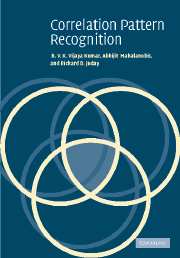Book contents
4 - Detection and estimation
Published online by Cambridge University Press: 06 August 2009
Summary
In Chapter 2, we discussed the basics of probability theory, which helps us to model the randomness in signals (called noise) and thus allows us to extract the desired signal from unwanted noise. An example source of noise is the thermal noise induced in the voltage across a resistor by the motion of electrons. Similarly, when light is incident on a photodetector, the number of electrons released is random (although the mean is proportional to the incident light intensity), and this randomness leads to noise or uncertainty in the signal. When a signal is corrupted by such random noise, it is often important to extract or restore the original signal from the noisy version; this is known as signal restoration. In other instances, our task is to classify the signal as the noisy version of one of a few possible signals. This task of detecting the signal class is known as detection (or classification) and it is one of the foci of this chapter. It is not surprising that detection theory has a bearing on pattern recognition. A generalization of the notion of detection is estimation, where we try to estimate a parameter (which can assume a value in an interval rather than in a discrete set) from a noisy signal. Estimation theory is also relevant in tasks such as evaluating a correlator; e.g., estimating the error rate from a classifier.
- Type
- Chapter
- Information
- Correlation Pattern Recognition , pp. 108 - 129Publisher: Cambridge University PressPrint publication year: 2005



